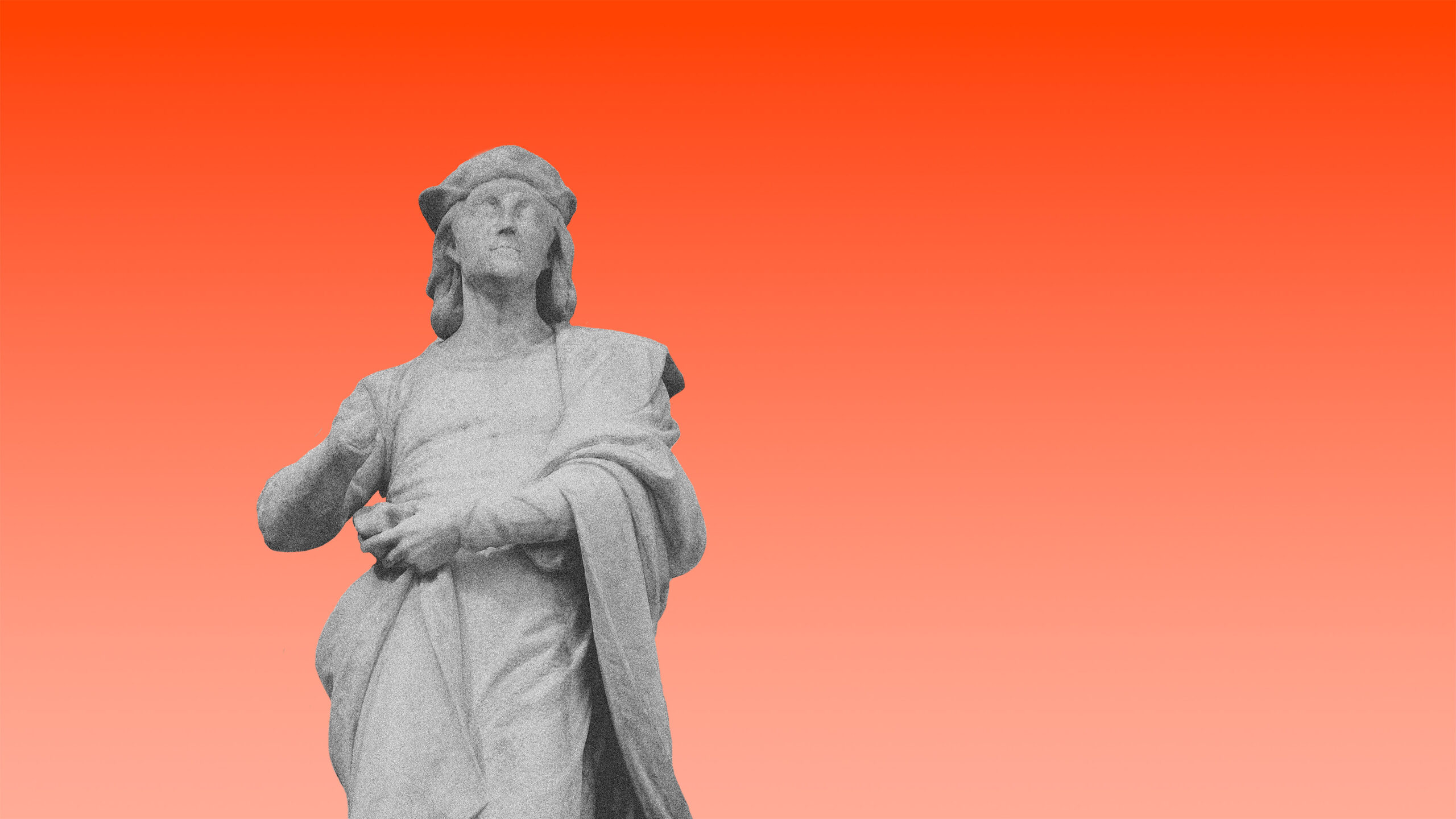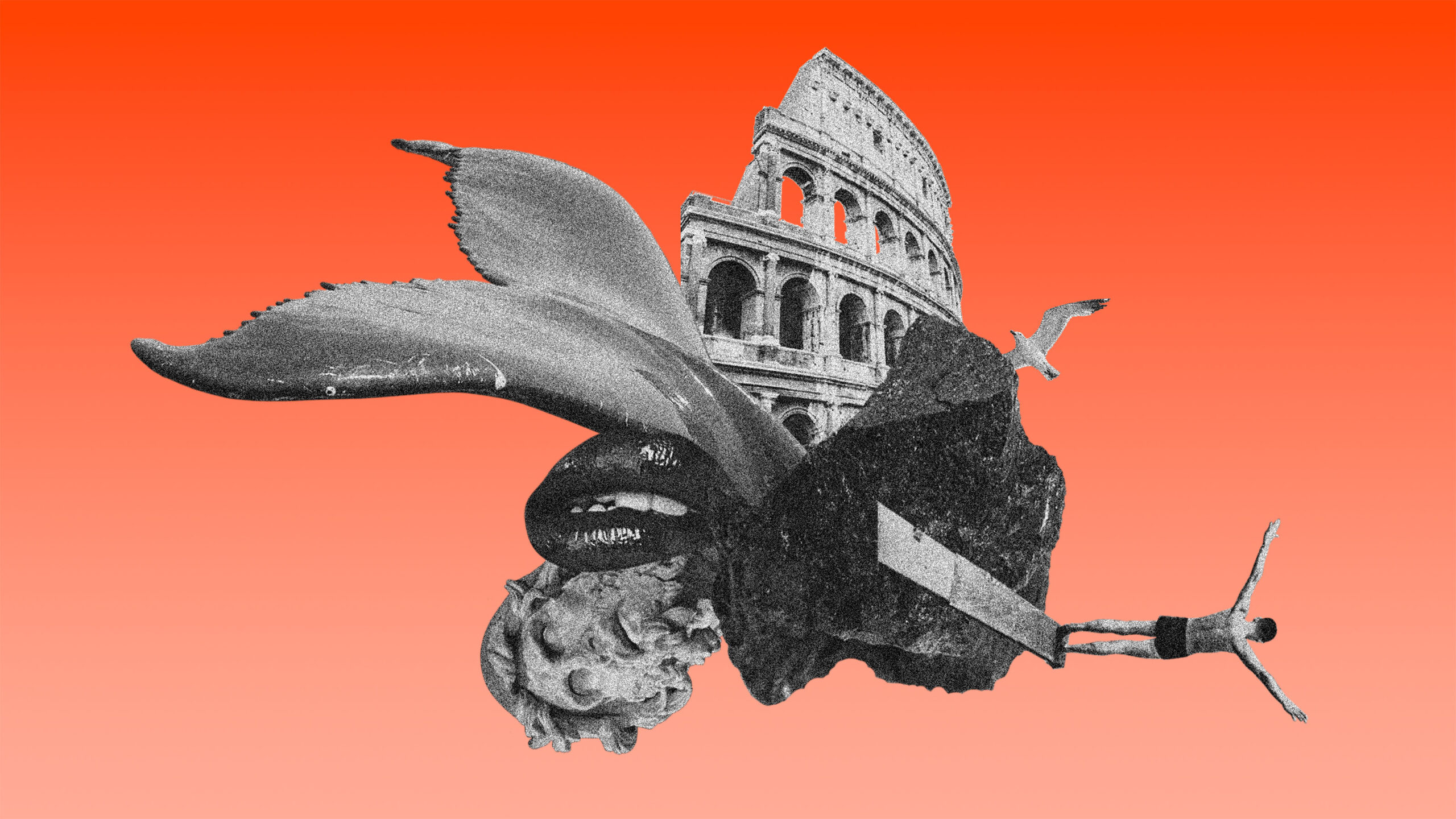
21 Apr The divine Raphael Santi and his autopsy of antiquity
I regard the world-famous Renaissance painter as a pillar saint of brownfield development, as he was the cartographer of an architectural atlas in ancient Rome. In a fruitful exchange with philosopher Bernd Waß, I found a classification.
“Il divino” – the divine – was the name given to Raphael Santi during his lifetime. I still do today. And I’m not just looking at the works of genius that are familiar to us today. Raphael Santi, the world-famous painter and architect known to most people today only by his first name, whose genius shone through the short span of the High Renaissance, who filled his contemporaries with boundless enthusiasm, “whose art was identified with absolute harmony and who sought to realize an aesthetic of timeless validity like no other, remained a pupil throughout his life. His teacher, whom he always had in mind as he bathed the future – especially that of Rome – in a new light, was classical antiquity – philosophy, rhetoric and architecture,” says Bernd Waß.
Santi was long regarded as the greatest painter of all time, oversaw the construction of St. Peter’s Basilica in Rome and achieved great fame not least with his lovely paintings of the Madonna: Raphael Santi, born in 1483 in Urbino in the Marche, died just 37 years later in Rome, was one of the most important artists of the Italian High Renaissance – and today, I would like to go into this aspect in more detail, he is my pillar saint of Brownfield development.
Not a business angel but an angelic entrepreneur
Brownfield development always means discovering history, researching origins, creating the future – a transfer to new uses. The new is not possible without the old. Bernd Waß and I agree on that. And also Raphael Santi and Pope Leo X. The latter wrote Raphael a letter in 1518 in which he asked him to map existing buildings and ruins. I asked Bernd Waß for a philosophical interpretation of this letter
“Raphael’s letter to the Medici Pope Leo X could be interpreted as the rediscovery of recollection. Although the so-called “Raphael letter” is essentially a groundbreaking architectural theory of modern design that is still valid today, this was not Raphael’s aim. The aim of the prefect over the ancient monuments of Rome was to identify the remaining ruins, to autopsy and measure them and to reconstruct them architecturally on this basis – a kind of architectural atlas of ancient architecture in order to be able to shape the future even better than before in the spirit of antiquity.”
This Raphaelian lesson on the magic of the past, an essential discovery for me in recent years, has given rise to the principle of my work on the “brownfields” of this world, the industrial, architectural and historical wastelands that are to be put to a new use in terms of economic and ecological sustainability: Search for the past in the present, thus revealing the template of the future. This fundamental principle of future archaeology, as I would like to call my discipline, leads in its application, according to the thesis, to a future that withstands the touchstones of the prosperous, the good: Modernity and humanity.

Future needs origin
My dear friend Bernd Waß confirmed to me in his profession as a philosopher that the future needs origins and sees us in good company in this:
“If our will were truly free, i.e. absolutely determined by nothing and therefore guided by nothing, it would be disoriented and therefore useless. It only unfolds its power where it is unfree insofar as it stands on the firm foundation of the past. It is from here that the landmarks that keep him on the right path are revealed to him. If our love for the new is like a tyrant who expels the old from the realm of the glorious, then we are lost: the future needs origin. This is how the German philosopher Odo Marquard put it, because in the modern world, according to Marquard, we increasingly expect the future – with good or bad feelings – to be the new. But the new – how is it even humanly possible? Not without the old. Although the great potential of the new, and thus of modernization, lies in the emancipation from linguistic, religious, cultural and family traditions of origin, radical neutrality of origin, to use Marquard’s words once again, leads to a will that only knows acceleration, but no humanity. We must therefore refute the great Ingeborg Bachmann and finally become learned students of history. And we need not be ashamed, because we are in good company.”
A frenzy that has forgotten the past
The résumé against the backdrop of a modern society that is often oblivious to the past and applauds those who think ahead, look ahead and anticipate: search for the past in the present, this is how the template of the future appears. In its application, this fundamental principle of future archaeology leads to a future that stands up to the touchstones of the prosperous, the good: Modernity and humanity.


